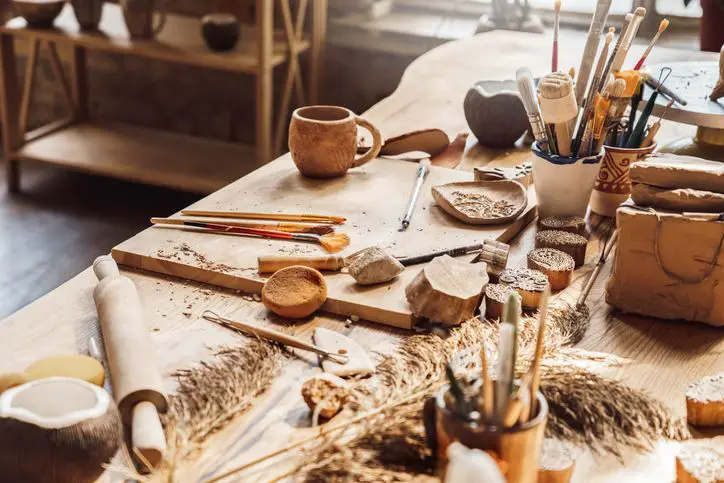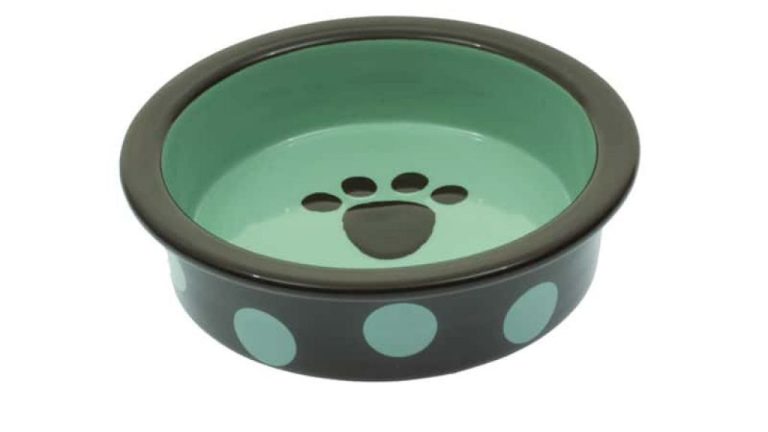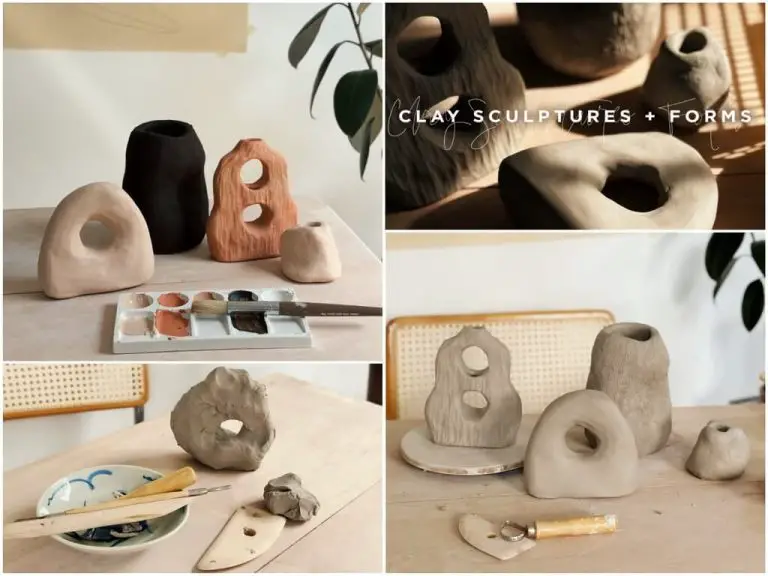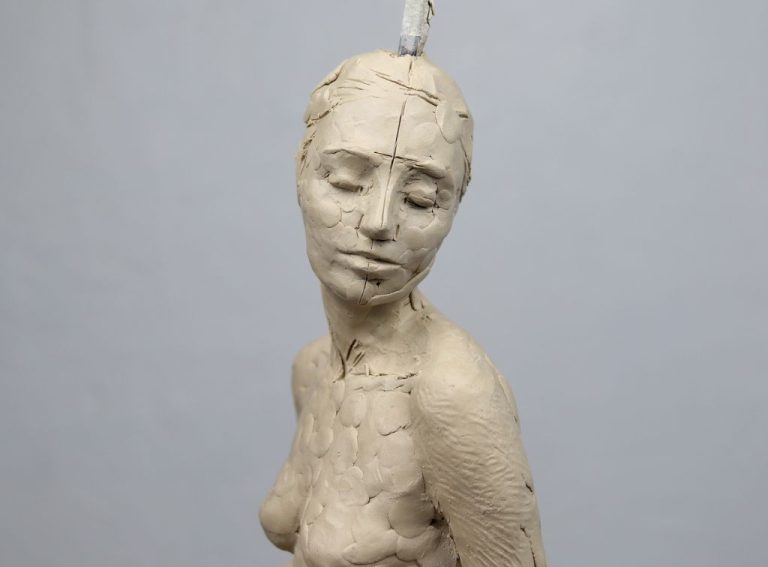What Is A Place That Makes Pottery Called?
Pottery is one of the oldest human inventions, dating back thousands of years. The earliest pottery vessels have been traced back over 20,000 years to ancient cultures in East Asia. Pottery making developed independently in many places across the globe, from the Jomon culture in Japan over 14,500 years ago to ancient Persia, Mesopotamia, and Egypt.
Evidence shows that pottery was being produced in the Fertile Crescent region around 7,000 BCE and in East Asia by 6,000 BCE. By 4,000 BCE, pottery making was widespread across many regions of Africa, Asia, and Europe. Pottery making has a rich history and tradition spanning countless generations in many cultures worldwide.
Definition of Pottery
Pottery refers to objects like bowls, cups, plates, vases etc. made out of clay that has been shaped while wet and then hardened by firing at high temperatures in a kiln. According to the Merriam-Webster dictionary, pottery is defined as “a place where clayware is made and fired.” 1 Pottery products first developed in East Asia during the Palaeolithic period, and ceramic objects like statues and tokens emerged in the Near East during the Neolithic period.2
Steps in Pottery Making
Pottery making involves several key steps from start to finish. First, the clay must be prepared. This involves wedging or kneading the clay to remove air pockets and create an even consistency (The Process of Making Pottery). Next comes shaping the clay into the desired form using techniques like wheel throwing, hand building, or molding. Pieces are set aside to dry slowly to avoid cracking before the first firing.
After the initial firing, known as a bisque firing, the pottery is glazed. Glazes are liquid mixtures of minerals and metal oxides that create a glassy coating and decorate the pottery when fired a second time. Glazing can be done in various ways like dipping, pouring, or spraying. The final high temperature firing bonds the glaze to the clay body to produce the finished pottery. Firing temperatures and times vary widely by the type of clay and glaze used (How to Make Pottery Step by Step).
Wheel Throwing
Wheel throwing is the process of forming clay into shapes on a potter’s wheel. It is a common technique for making ceramic mugs, bowls, and vases. A potter centers a ball of clay on the spinning potter’s wheel and uses their hands, and simple tools, to shape the clay into the desired form. As the wheel spins, the potter places one or both hands on the clay to push against its rotation. This pressure thins the walls and shapes the clay into a cylinder. Further shaping can create a variety of functional and decorative forms.
Wheel throwing requires practice to master, as it involves coordination, strength, and muscle memory. Beginners start with basic cylinder and bowl forms. More complex techniques include pulling up the walls, altering shapes, adding handles and spouts, and creating lids. Highly skilled potters can create intricate forms at fast speeds, even shaping multiple pieces at once.
Wheel throwing dates back thousands of years, originating in Ancient Mesopotamia and China. It allows potters great flexibility and control in their work. While it can be frustrating at first, it is an extremely gratifying process once mastered.
Source: https://www.thecrucible.org/guides/ceramics/wheel-throwing/
Kilns
Kilns are ovens used to fire pottery in order to harden the clay through a process called sintering. Kilns allow potters to precisely control the firing temperature, heating rate, cooling time, and atmosphere to achieve the desired results. There are various types of kilns used in pottery making:
Electric kilns are one of the most common types used by potters today. They provide consistent, even heat through heating elements and do not require fuel other than electricity. Popular models include top-loading and front-loading electric kilns. According to Pottery Creative, electric kilns allow precise control over the firing process.
Gas kilns rely on natural gas or propane for fuel. Gas kilns can reach higher temperatures faster than electric kilns, but temperature control is more difficult. Gas kilns are known for providing effects like natural flashing of glazes. Some potters prefer gas kilns because they can mimic the atmosphere of traditional wood-fired kilns.
Glazes
Glazes are colored coatings that are applied to pottery pieces before they are fired in a kiln. According to The Basics of Glazing Ceramics, glazes serve several purposes: they make pottery impermeable to liquids, they decorate the surface with colors and effects, and they give the pottery a smooth, glass-like finish. Glazes are made from a mixture of minerals and compounds like silica, borax, and colorants.
There are many different types of glazes to choose from. They can create a wide range of looks like glossy, matte, or crackled surfaces. Popular glaze techniques involve dripping, pouring, brushing, sponging, spraying, and dipping to create the desired effects. Glazes need to be fired at high temperatures in a kiln for the minerals to melt and fuse to the clay body beneath. Firing temperatures usually range from cone 04 (1945°F) to cone 10 (2381°F) depending on the makeup of the glaze. Carefully applying and firing glazes is key to achieving beautiful finishes on pottery.
Types of Pottery
There are several main types of pottery characterized by the clays used and the temperature at which they are fired.
Earthenware is made from clay that has a high iron content. It fires at lower temperatures, between 1,750°F and 2,100°F. Earthenware is porous and opaque. Common types of earthenware pottery include terra cotta, earthenware, and stoneware. Sources: https://www.soulceramics.com/pages/types-of-clay, https://thepotterywheel.com/types-of-clay-for-pottery/
Stoneware is made from clay that has been fired between 2,100°F and 2,300°F. It is non-porous, vitrified, and more durable than earthenware. It can resist thermal shock and is often glazed to make it impermeable to water. Stoneware was originally made from grey or buff-colored clays. Sources: https://seattlepotterysupply.com/pages/the-types-of-pottery-clay-and-what-they-are-used-for, https://thepotterywheel.com/types-of-clay-for-pottery/
Porcelain is made from kaolin clay and fires between 2,200°F and 2,500°F. It is even less porous than stoneware and is white, translucent, and glass-like after firing. Porcelain was developed in China and became popular in Europe in the 18th century. It is commonly used for tableware and artware. Source: https://thepotterywheel.com/types-of-clay-for-pottery/
Famous Pottery Styles
Some of the most famous pottery styles throughout history come from ancient Greece, China, Japan, and Italy. Greek pottery dating back to the 8th century BCE featured iconic black-figure and red-figure styles, with intricately painted scenes depicting myths, everyday life, and more. Famous examples include the amphorae and kraters used for mixing wine and water at symposia. Chinese pottery has a similarly ancient lineage, with early styles like Majiayao dating back to 3000-2000 BCE. Over the centuries, China developed refined porcelain styles like Qingbai and Dehua, prized for their delicate beauty. Japan also became renowned for its pottery, with ancient Jōmon ware giving way to refined styles like Seto, Bizen, and Karatsu. Meanwhile, Italian pottery reached new heights during the Renaissance, led by maestros like Luca della Robbia who pioneered glazing techniques.
Other influential pottery styles include Minoan and Mycenaean pottery of ancient Greece, Terra Sigillata from ancient Rome, Tang dynasty pottery from China, Celadon from Korea, and Aztec pottery from Mesoamerica. While too numerous to list comprehensively, these diverse traditions demonstrate how pottery evolved across cultures as both an artform and practical necessity.
Pottery Workshop/Studio

A pottery workshop, also called a pottery studio, is a workspace where pottery is made by potters, ceramic artists, ceramicists, and other makers. The studio provides the space, equipment, and materials for creating pottery from clay.
In a pottery studio, potters can practice wheel throwing, hand building techniques, sculpture, and applying glazes. The studio contains essential equipment like potter’s wheels, extruders, slab rollers, kilns, and work tables (Wikipedia). Potters require a variety of tools to shape, carve, mold, and decorate the clay including rib bones, fettling knives, loop tools, sponges, and trimming tools.
Clay storage and preparation areas are necessary in a pottery studio. Slip trailing, sgraffito, sprigging, and inlaying are some decoration techniques that can be done. The studio provides sufficient space for projects to air dry slowly before firing. Kilns like electric, gas, wood fire, and raku kilns may be used for firing pottery to high temperatures to harden and set the clay.
A pottery studio facilitates learning, creating, and developing pottery skills in a collaborative setting. Workshops and classes are commonly held at pottery studios. The shared community environment allows potters to exchange ideas, techniques, and creative inspiration.
Conclusion
Pottery making has been an important tradition in cultures around the world for thousands of years. As the sources show, pottery enables archaeologists and historians to gain insight into past civilizations. The discovery of pottery pieces provides a window into the lives, beliefs, and practices of ancient cultures. Even today, pottery continues to be a way for cultures to express identity and connect to the past.
Pottery will likely continue to hold an important place in human culture going forward. As long as cultures around the world value tradition, heritage, and artistry, the ancient craft of pottery making will endure. Archaeologists and historians will continue to rely on pottery pieces to unravel mysteries of the past. With its timeless appeal and cultural significance, pottery making traditions seem poised to be passed down for generations to come.





